Visitando el espectacular Parque Natural de las Hoces del río Riaza nos detenemos a observar las peculiaridades de este paisaje tan interesante desde el punto de vista geológico. Con este Earthcaché queremos mostrar a los geocachers este magnífico paraje y que así puedan aprender algo más de la geología del terreno.
HOCES DEL RÍO RIAZA
El río Riaza ha excavado en las duras rocas calizas de los páramos segovianos uno de los mayores conjuntos de hoces, cañones, acantilados y desfiladeros que se pueden contemplar en el interior de la Península Ibérica.
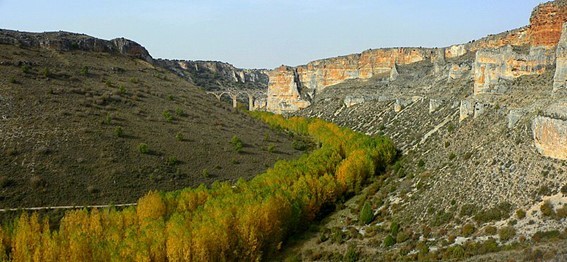
HISTORIA GEOLÓGICA
La zona de las Hoces del río Riaza se encuentra rodeada de la cuenca del Duero, al Norte, y las estribaciones del Sistema Central, al Sur. Esta situación le confiere unas características singulares que se describen a través de su historia geológica.
La evolución geológica de las Hoces del Riaza se remonta a unos 530 millones de años, en el inicio de la era Primaria. En esa época esta zona se elevaba sobre el nivel del mar formando parte de un gran sistema montañoso que unía el centro de la Península Ibérica con los macizos de Francia y centro de Europa.
Al llegar la era Secundaria, hace 250 millones de años, un mar templado y poco profundo inundó gran parte del interior de la península y erosionó la antigua cordillera. De este modo gran cantidad de sedimentos carbonatados, principalmente calcáreos, se acumularon en el fondo del mar continental, dando lugar a las rocas calizas cretácicas de origen marino que constituyen este cañón. En algunos estratos pueden encontrarse fósiles de seres marinos que vivieron en aquella época. Estos restos evidencian la existencia de un mar hace millones de años y proporcionan información sobre las características del ambiente donde vivían.
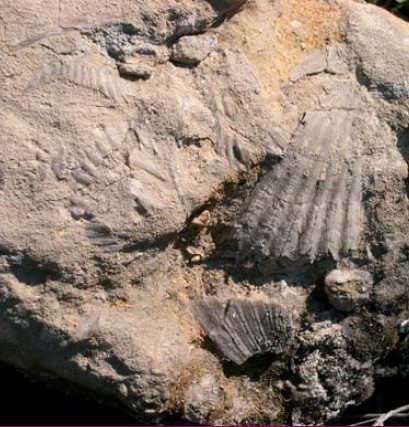
Hace 65 millones de años, durante la Orogenia Alpina (etapa de formación de montañas producida durante el Cenozoico cuando el continente africano chocó contra Eurasia), tuvo lugar el acercamiento del continente africano al europeo y todo el sedimento que se acumuló en la anterior era se fue plegando, fracturando y elevando hasta crear las montañas que conocemos actualmente. Estas elevaciones comienzan a erosionarse hacia la cuenca del Duero, formando abanicos aluviales que darán lugar a las formaciones de conglomerados o pudingas de la Peña Rubia y Peña Portillo. Estos macizos montañosos rodeaban una gran cuenca sin salida al mar por lo que dicha cuenca se fue rellenando de materiales arrancados a zonas elevadas periféricas (areniscas, conglomerados, arcillas) que pueden encontrarse actualmente en toda la Meseta Central.
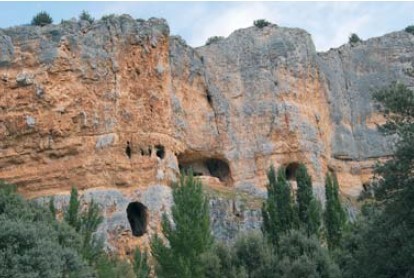
Hace 1,8 millones de años, a finales del Terciario, toda esta zona es una gran penillanura en la que se implanta la red fluvial, comenzando así la erosión del río Riaza y su encajamiento primero en los materiales blandos del Terciario y más adelante en las calizas del Cretácico. Desde entonces la erosión junto a los periodos de expansión y contracción de masas glaciares han ido moldeando las montañas y valles hasta conseguir el paisaje que podemos observar actualmente mediante la acumulación de sedimentos en forma de terrazas y lechos fluviales.
PARQUE NATURAL
Declarado Parque Natural el 21 de diciembre de 2004 cuenta con una superficie total de 5.184 ha y se encuentra en las tierras más orientales de la provincia de Segovia, cerca de Soria y Burgos. Los municipios de Montejo de la Vega, Maderuelo y Valdevacas de Montejo aportan parte de su territorio a este parque.
Por otra parte, desde 1989 este parque es Zona de Especial Protección para Aves (ZEPA) y es que, además de su espectacular paisaje, en este solitario espacio geográfico la presencia de cortados calizos, con abundantes repisas y oquedades de diversos tamaños permite el asentamiento de una importante concentración de aves rapaces entre las que destacan alrededor de 200 parejas de buitres leonados. Además, el embalse de Linares del Arroyo se convierte todos los años en la principal área provincial para la invernada de diferentes especies de aves acuáticas.
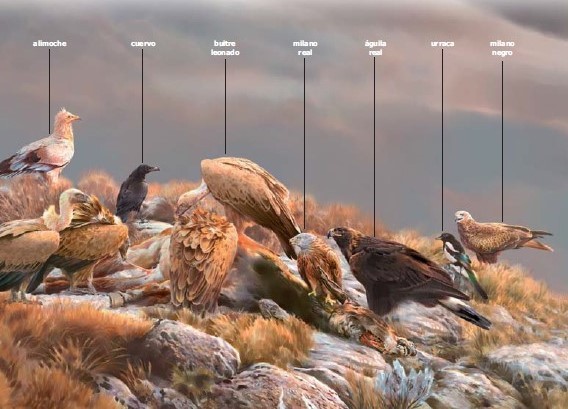
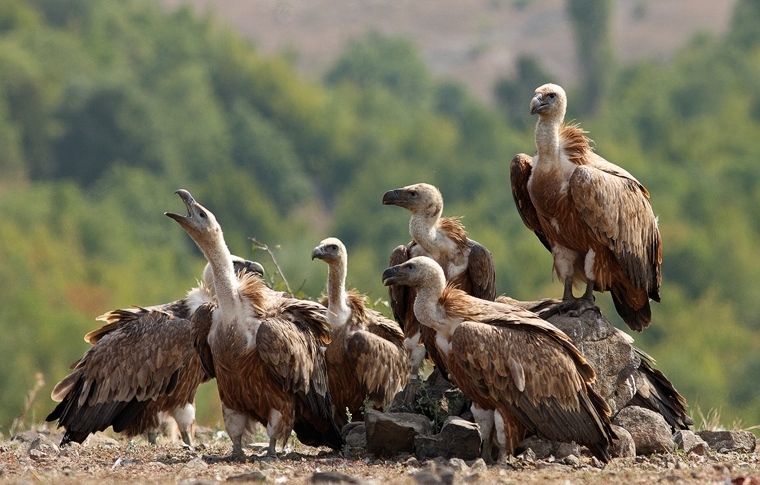
En cuanto a la vegetación que allí se puede encontrar, es principalmente esteparia, con manchas de arbolado adaptado a la continentalidad del clima (encinas y quejigos). Las laderas y escarpes rocosos, por su parte, están cubiertos por bosques de sabina albar, árboles que son auténticos fósiles vivientes de la época terciaria. En un ensanchamiento del cañón aparecen situados los solitarios restos románicos del convento de Casuar.
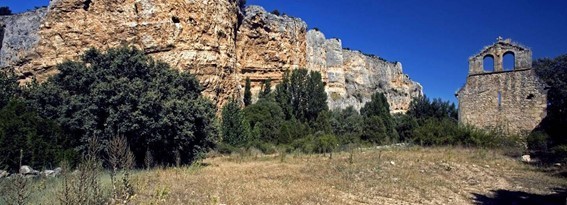
El río Riaza constituye su eje vertebral pudiéndose distinguir tres zonas estructuralmente diferenciadas:
- La primera zona sería la que va desde Maderuelo hasta la presa de Linares del Arroyo con un paisaje dominado por las aguas remansadas del río el cual se encuentra embalsado desde 1951.
- Entre la anterior presa y el arroyo de Vadecasuar se encuentra la zona más espectacular del parque. Con una longitud de 5,5 km el río se encaja en un barranco angosto flanqueado por paredes calizas formando un cañón calcáreo de hasta 150 m de profundidad y entre 200 y 300 de anchura. En lo alto de los cortados rocosos anidan las aves rapaces que son las protagonistas de este espacio natural.
- En el último tramo, hasta Montejo de la Vega, el paisaje se vuelve más suave estando las aguas del río acompañadas en su fluir por una fértil vega.
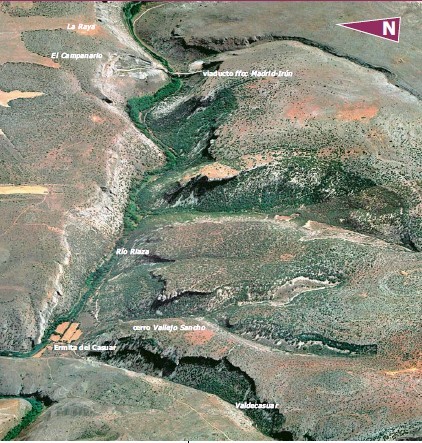
Este espacio natural es poseedor de la Carta Europea de Turismo Sostenible concedida por la Federación EUROPARC (que agrupa a los espacios naturales protegidos de Europa), por las excelentes iniciativas que se desarrollan para dinamizar el medio rural y por sus eficientes sistemas de gestión y control de visitas, entre otros aspectos.
Para poder visitar este parque natural y disfrutar al máximo de las posibilidades que ofrece es recomendable visitar la CASA DEL PARQUE, situada en Montejo de la Vega. Allí podrás obtener toda la información necesaria para poder interpretar adecuadamente todos los misterios de la naturaleza que allí se ofrecen.
Como todo espacio protegido la visita a este Parque Natural tiene ciertas restricciones para su adecuada conservación. Como en otros espacios naturales protegidos es necesario caminar sin salirse de las sendas y caminos, no tirar basura ni hacer ruido, no acampar ni hacer fuego, no recoger plantas, piedras o animales, es decir, hacer todo lo posible para que no queden huellas de tu presencia.
Además, entre el 1 de enero y 31 de julio, has de contactar con la Casa del Parque, bien en su ubicación en Montejo de la Vega, bien a través de su correo electrónico cp.riaza@patrimonionatural.org para poder conseguir el permiso necesario para poder acceder a dicho Parque. El número máximo de personas por grupo es de 10. El resto del año el Parque puede ser visitado libremente.
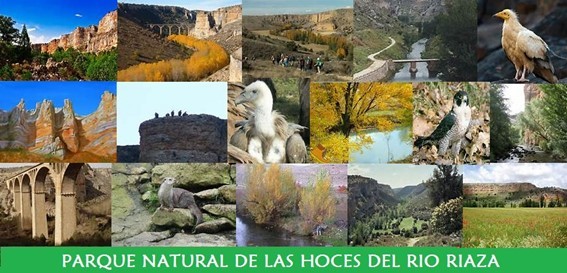
El caché:
Para registrar este caché deberás contestar a las siguientes preguntas:
Coordenadas iniciales. N 41 32.278 W 003 34.387
Las coordenadas iniciales te sitúan delante de un cartel informativo a la orilla del río Riaza en medio del cañón.
Cuestión 1. En el inicio de la era Primaria la zona en la que nos encontramos formaba parte de un gran sistema montañoso que unía el centro de la Península Ibérica con los macizos de Francia y centro de Europa. ¿A qué se debe que actualmente podamos encontrar fósiles marinos en algunos de los estratos de este cañón?
Cuestión 2. ¿Qué se conoce como la Orogenia alpina ocurrida hace 65 millones de años?
Cuestión 3. En el siguiente mapa se ha localizado un punto marcado en rojo. ¿A qué tipo de rocas formadas en qué periodo geológico corresponde dicho lugar según el mapa que se encuentra en la zona derecha del cartel informativo?
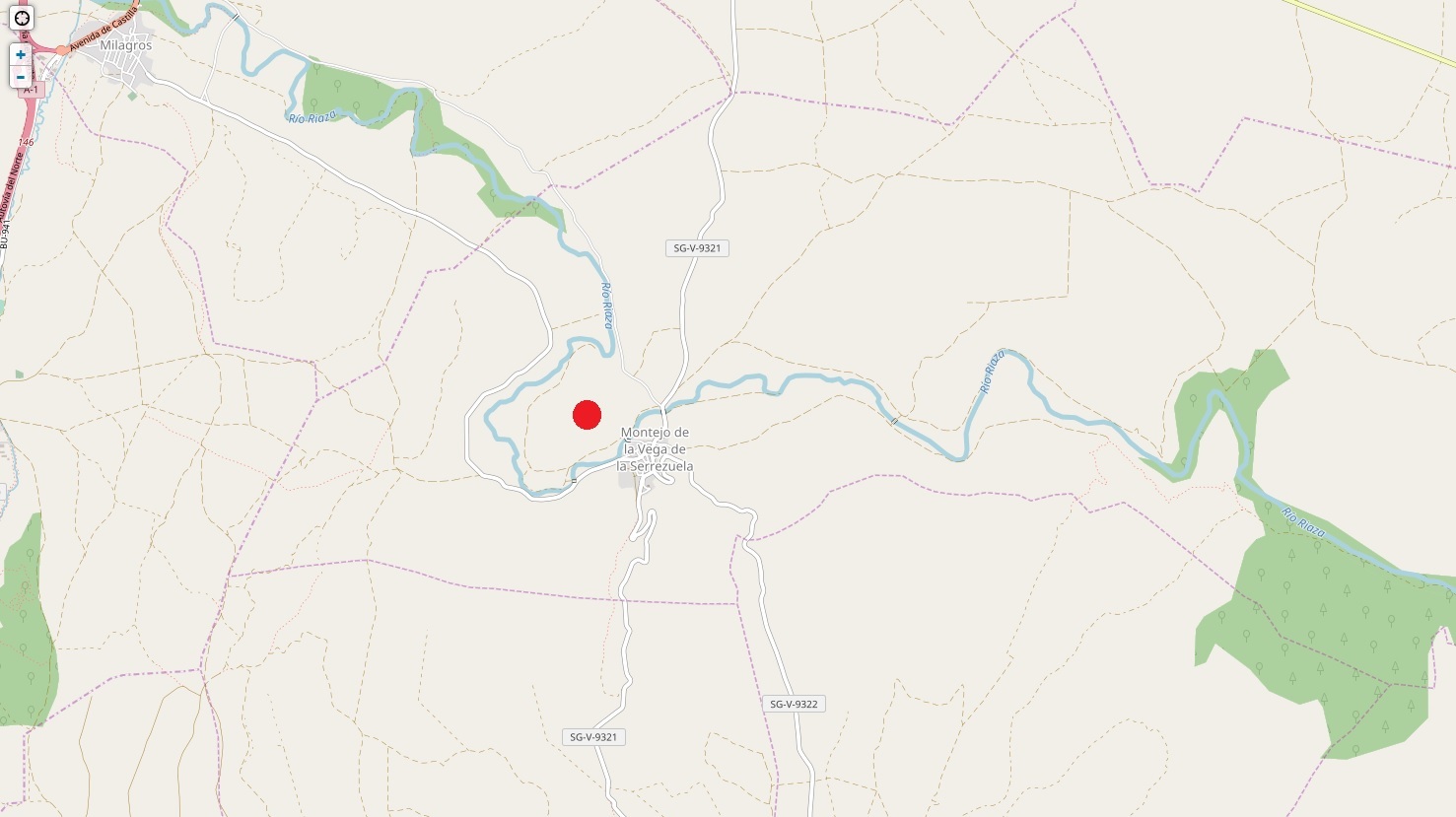
Cuestión 4 (opcional). Hazte una foto en el lugar (sin revelar ninguna de las cuestiones anteriores) y envíala junto con las respuestas a las demás cuestiones.
IMPORTANTE: Para registrar este Earthcache, por favor, enviadnos un mensaje con las respuestas a las preguntas anteriormente formuladas. Si no se cumple esto, el log podría ser borrado. No es necesario esperar a nuestra respuesta de aprobación para hacer el “found”, pero sí es necesario enviar las respuestas.
English version
Visiting the spectacular Natural Park of the Sickles of the Riaza River we stop to observe the peculiarities of this interesting landscape from the geological point of view. With this Earthcaché we want to show to the geocachers this magnificent place learning something more about the geology of the terrain.
HOCES DEL RÍO RIAZA (SICKLES OF THE RIAZA RIVER)
The Riaza river has excavated in the hard limestone rocks of the Segovia terrains one of the largest sets of sickles, canyons, cliffs and gorges that can be seen in the interior of the Iberian Peninsula.
GEOLOGICAL HISTORY
The area of the Sickles of the Riaza River is surrounded by the Duero basin, to the North, and the foothills of the Central System, to the South. This situation gives it unique characteristics that are described through its geological history.
The geological evolution of the Hoces del Riaza dates back to about 530 million years ago, at the beginning of the Primary era. At that time this area rose above sea level forming part of a large mountain system that linked the center of the Iberian Peninsula with the mountainous massifs of France and central Europe.
When the Secondary era arrived, 250 million years ago, a temperate and shallow sea flooded much of the interior of the peninsula and eroded the old mountain range. In this way a large quantity of carbonate sediments, mainly calcareous, were accumulated in the bottom of the continental sea, giving rise to the Cretaceous limestone rocks of marine origin that constitute this canyon. In some strata can be found fossils of different marine animals who lived at that time. These remains evidence the existence of a sea millions of years ago and provide information on the characteristics of the environment where they lived.
65 million years ago, during the Alpine Orogeny (stage of mountain formation produced during the Cenozoic period when the African continent crashed into Eurasia), the approach of the African continent to the European one took place and all the sediment that accumulated in the previous geological era was folding, fracturing and elevating until creating the mountains that we know today. These elevations begin to erode towards the Duero basin, forming alluvial fans that will give rise to the formations of conglomerates or puddings of Peña Rubia and Peña Portillo. These mountainous massifs surrounded a large basin with no outlet to the sea, so this basin was filled with materials taken from peripheral high areas (sandstones, conglomerates, clays) that can be found throughout the Central Plateau of the Iberian Peninsula.
1.8 million years ago, at the end of the Tertiary era, this whole area is a large peneplain in which the fluvial network is implanted, thus beginning the erosion of the Riaza River and its first insertion in the soft materials of the Tertiary era and later in the limestones of the Cretaceous. Since then, erosion along with the periods of expansion and contraction of glacial masses have been shaping the mountains and valleys to achieve the landscape that we can observe at present through the accumulation of sediments in the form of terraces and fluvial beds.
NATURAL PARK
Declared Natural Park on December 21, 2004, it has a total area of 5,184 ha and is located in the easternmost lands of the province of Segovia, near Soria and Burgos. The villages of Montejo de la Vega, Maderuelo and Valdevacas de Montejo contribute part of their territory to this Natural Park.
On the other hand, since 1989, this park is a Special Protection Area for Birds (ZEPA) and, in addition to its spectacular landscape, in this solitary geographical space, the presence of limestone cuttings, with abundant shelves and hollows of different sizes allows the settlement of an important concentration of birds of prey among which around 200 pairs of griffon vultures stand out. In addition, the Linares del Arroyo reservoir is converted every year into the main provincial area for the wintering of different species of aquatic birds.
Regarding the vegetation that can be found here, it is mainly steppe, with patches of trees adapted to the continental climate (oaks and gall oaks). The slopes and rocky escarpments, on the other hand, are covered by forests of juniper trees that are authentic living fossils of the Tertiary period. In a widening of the canyon the solitary Romanesque remains of the convent of Casuar appear.
Riaza River constitutes its vertebral axis being able to distinguish three structurally differentiated zones:
- The first zone would be the one that goes from Maderuelo to the dam of Linares del Arroyo with a landscape dominated by the replenished waters of the river which has been dammed since 1951.
- The terrain between the previous dam and the Vadecasuar stream is the most spectacular area of the park. With a length of 5.5 km the river fits into a narrow ravine flanked by limestone walls forming a calcareous canyon up to 150 m deep and between 200 and 300 wide. At the top of the rocky cliffs nest the birds of prey that are the protagonists of this natural space.
- In the last section, up to Montejo de la Vega, the landscape becomes softer as the waters of the river are accompanied by flowing through a fertile plain.
This natural area is holder of the European Charter for Sustainable Tourism granted by the EUROPARC Federation (which groups the protected natural areas of Europe), for the excellent initiatives that are developed to boost the rural environment and for its efficient management and control systems of visits, among other aspects.
In order to visit this natural park and fully enjoy the possibilities it offers, it is advisable to visit the “CASA DEL PARQUE” (Park House), located in Montejo de la Vega. There you can get all the necessary information to properly interpret all the nature mysteries that are offered there.
Like any protected area, the visit to this Natural Park has certain restrictions for its proper conservation. As in other protected natural areas it is necessary to walk without leaving the paths, do not litter or make noise, do not camp or make fire, do not pick up plants, stones or animals, that is, do everything possible there are no traces of your presence.
In addition, between January 1st and July 31st, you have to contact the Casa del Parque (Park House), either at its location in Montejo de la Vega, or through e-mail (cp.riaza@patrimonionatural.org) to get the necessary permission to be able to access to the Park. The maximum number of people per group is 10. The rest of the year the visit to the Park is free.
The cache:
To register this cache you must answer the following questions:
Initial coordinates. N 41 32.278 W 003 34.387
The initial coordinates place you in front of an information poster on the banks of the Riaza River in the middle of the canyon.
Question 1. At the beginning of the Primary era, the area in which we find ourselves was part of a great mountain system that linked the center of the Iberian Peninsula with the massifs of France and central Europe. Why we can currently find marine fossils in some of the strata of this canyon?
Question 2. What is known as Alpine Orogeny that occurred 65 million years ago?
Question 3. In the following map a point marked in red has been located. What kind of rocks formed in what geological period corresponds to that place according to the map located in the right zone of the information poster?

Question 4 (optional). Take a picture on site (with no spoilers for the questions above) and send it along with the answers to the other questions. You may publish the picture if you want.
IMPORTANT: To log this Earthcache, please send us a message with the answers to the questions previously formulated. If this is not true, the log could be deleted. It is not necessary to wait for our approval response to make the "found", but it is necessary to send the answers.